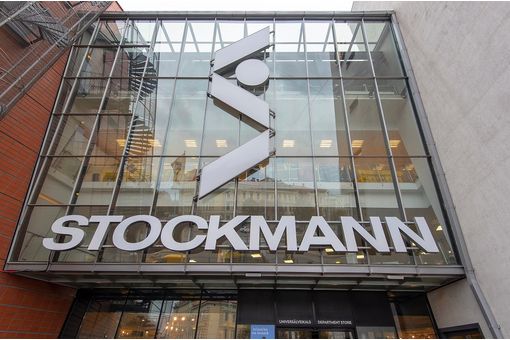Interviews
News Flash
UK high streets lost 17,532 chain store outlets in 2020
16 Mar '21
3 min read

Pic: Shutterstock
Lockdowns last year resulted in chains vanishing from the UK high street at an average rate of 48 stores per day. Data by accountancy firm PwC with the Local Data Company (LDC) found that almost 10,000 chain stores disappeared from the UK retail locations in 2020. In total, 7,655 shops opened, compared to 17,532 closures, a net decline of 9,877 last year.
The findings starkly compare to five years ago in 2015, which saw a net decline of just over 1,000, 50 per cent more openings and 25 per cent fewer closures than 2020.
Worryingly the real impact of the pandemic is yet to be felt, PwC said, as some stores ‘temporarily closed’ during lockdowns, but considered as open in the research, are unlikely to return.
The effect of store closures on consumer behaviours is also driving changes. Retail parks have seen the smallest number of net closures of any location (453), compared to high streets (4,690) and shopping centres (1,791).
Footfall was already holding up better in retail parks before the pandemic due to their investment in leisure and some retail parks have benefitted by being anchored by essential retailers that have remained open, even during the tightest restrictions.
But it is also because they are considered safer in the current environment: free parking means it’s possible to drive to the location (and avoid public transport), outdoor areas mean reduced indoor mixing and larger units allow for better social distancing measures.
Shopping centres by contrast, are often poorly located for consumers who want to shop local and travel less to city centres, and are more likely to host fashion retailers and chain restaurants, which are the number one and thee most hard hit categories for net closure in 2020.
Meanwhile, the drop off in high-street footfall has affected those multiple retailers located on high streets, particularly those in large city centres. However, this decline in multiples has been somewhat offset by growth in interest of local and independent operators.
Small towns, which have long been in decline at the expense of more populous areas and cities, are now also enjoying a mini-renaissance. Consumers now want to shop in these locations, and larger retailers want to be there.
There is greater regional disparity this year. Looking at absolute figures, London, South East and the North West have seen the most closures, unsurprising given those regions have more chain stores.
London has been hit harder than other regions. Conversely, Wales, Scotland, East of England and South West, where retail destinations are less highly concentrated, have been more protected from closures.
“The full extent [of the effect of COVID-19] will be revealed in the coming months as many of the CVAs and administrations in the early part of 2021 still haven’t been captured, including department stores, fashion retailers and hospitality operators that will leave big holes in city centre locations,” Lisa Hooker, consumer markets lead at PwC, said.
The findings starkly compare to five years ago in 2015, which saw a net decline of just over 1,000, 50 per cent more openings and 25 per cent fewer closures than 2020.
Worryingly the real impact of the pandemic is yet to be felt, PwC said, as some stores ‘temporarily closed’ during lockdowns, but considered as open in the research, are unlikely to return.
The effect of store closures on consumer behaviours is also driving changes. Retail parks have seen the smallest number of net closures of any location (453), compared to high streets (4,690) and shopping centres (1,791).
Footfall was already holding up better in retail parks before the pandemic due to their investment in leisure and some retail parks have benefitted by being anchored by essential retailers that have remained open, even during the tightest restrictions.
But it is also because they are considered safer in the current environment: free parking means it’s possible to drive to the location (and avoid public transport), outdoor areas mean reduced indoor mixing and larger units allow for better social distancing measures.
Shopping centres by contrast, are often poorly located for consumers who want to shop local and travel less to city centres, and are more likely to host fashion retailers and chain restaurants, which are the number one and thee most hard hit categories for net closure in 2020.
Meanwhile, the drop off in high-street footfall has affected those multiple retailers located on high streets, particularly those in large city centres. However, this decline in multiples has been somewhat offset by growth in interest of local and independent operators.
Small towns, which have long been in decline at the expense of more populous areas and cities, are now also enjoying a mini-renaissance. Consumers now want to shop in these locations, and larger retailers want to be there.
There is greater regional disparity this year. Looking at absolute figures, London, South East and the North West have seen the most closures, unsurprising given those regions have more chain stores.
London has been hit harder than other regions. Conversely, Wales, Scotland, East of England and South West, where retail destinations are less highly concentrated, have been more protected from closures.
“The full extent [of the effect of COVID-19] will be revealed in the coming months as many of the CVAs and administrations in the early part of 2021 still haven’t been captured, including department stores, fashion retailers and hospitality operators that will leave big holes in city centre locations,” Lisa Hooker, consumer markets lead at PwC, said.
Fibre2Fashion News Desk (DS)
Popular News
Leave your Comments
Editor’s Pick
Apparel/Garments
Apr 28, 2024
2 min read
Retail
Apr 28, 2024
2 min read
Apparel/Garments
Apr 28, 2024
2 min read
































-Ltd..jpg?tr=w-120,h-60,c-at_max,cm-pad_resize,bg-ffffff)





.jpg?tr=w-120,h-60,c-at_max,cm-pad_resize,bg-ffffff)
.jpg?tr=w-120,h-60,c-at_max,cm-pad_resize,bg-ffffff)






